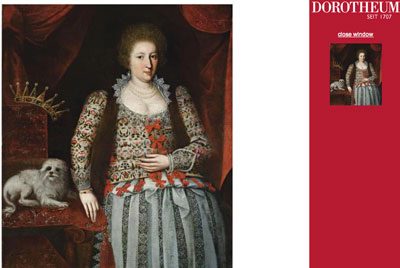May 21, 2012
Stitch Fun Index
Stitch Fun is a series of articles featuring step-by-step photo tutorials that explore various hand embroidery stitches and the fun things you can do with them.
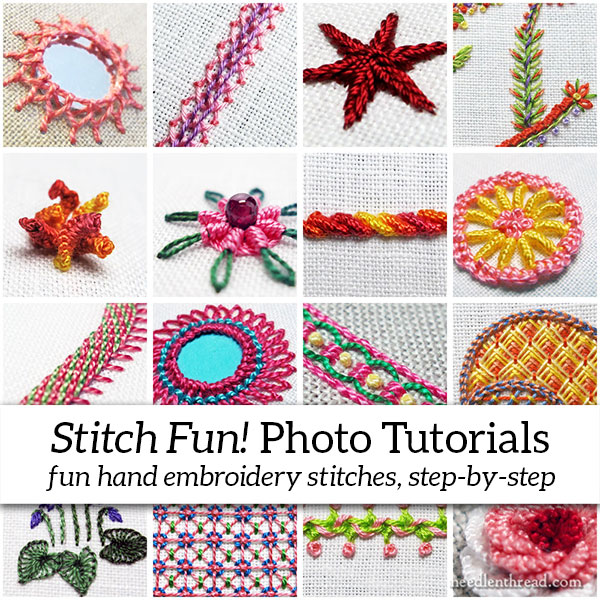
May 21, 2012
Stitch Fun is a series of articles featuring step-by-step photo tutorials that explore various hand embroidery stitches and the fun things you can do with them.

May 18, 2012
Last year, I shared with you some gorgeous needlepainted pictures in a type of embroidery called “Su Embroidery” – it is a Chinese style of embroidery from Suzhou, China, and it is amazing embroidery!
Now, thanks to Margaret Lee of Adelaide, South Australia, and Country Bumpkin you can learn Su Embroidery techniques via the handy “mechanism” of a kit.
One of the best ways to learn a technique (if you can’t attend a class) is to invest in a kit produced by a master in that technique. Find a technique that entices you, then find a designer who produces kits and books focusing on that technique, and use the kit as a learning tool. It works! If you treat the kit as a learning exercise and work your way through the designer’s steps to complete the kit, you’ll learn much about the embroidery technique. The experience may not always be roses and sunshine and perfect embroidery stitches, but you will definitely progress (and usually by leaps and bounds rather than baby steps) towards a better understanding and ability in that particular technique.
So, if Su Embroidery interests you, you might want to take a look at these complete, inclusive kits by Margaret Lee. I’ll show you one…
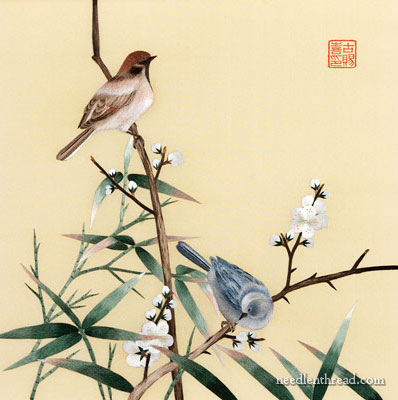
May 17, 2012
Oh dear. I seem to be on a contemplative kick – musing still over the whole cost-quality-time-value question of embroidery! If you’re in the mood to join me, do pull up a chair and pour yourself a cup of coffee. (You might need it to stay awake!)
Your comments on the blog articles from Monday and Tuesday have me thinking about a lot of things relating to embroidery and how we value our hand embroidery work. Following up on Tuesday’s discussion of the material cost involved in creating the Medallion Project, another aspect I consider when musing over the notion of Value is…

May 16, 2012
Grecian Twist is a four-ply metal thread made out of two types of gold – one is smooth and bright and shiny, and the other is somewhat matte and “old gold” looking, compared to the other. It’s a thick cord, about 1/8″ or slightly less, and it is perfect for outlining and neatening an edge. Because Grecian Twist is not a fine (size-wise) goldwork thread, it is dealt with a little differently than many standard types of metal thread.
Today, I’ll show you how to attach Grecian Twist to a goldwork project. I’m afraid I didn’t take the best step-by-step photos of this process, so instead of a thorough photo tutorial, you’ll have to read the text for a bit of explanation, too.
By the way, Grecian Twist is quite easy to sew on, so don’t be intimidated by the beauty of the thread (I think it’s a particularly beautiful thread!), thinking that such a beautiful thread would require some fancy-schmancy approach to embroidery or stitching!
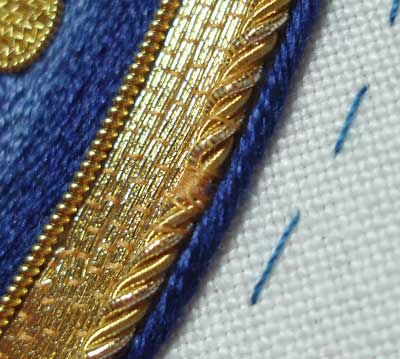
May 15, 2012
After posting the finish on the Medallion Project yesterday, I received many comments both on the website and via e-mail that were so kind, enthusiastic, and appreciative of the finished project and the whole process of creating the Medallion. Thank you so much! Your comments really cheered me, especially when suffering the inevitable “let down” after a major project! I will do my very best in the upcoming days to answer the questions that are still lingering, especially those involving technique. I have a few instructional tips to share with you still!
Surprisingly, this is the first time I’ve had more comments via e-mail than on the website. My inbox hosted some 300 e-mail yesterday, and although I’d like to answer them all (haven’t yet – still trying!), I’ve certainly been reading them, and I thank you for sending them!
For those of you who asked specific questions, I made notes, categorized them, and will try to answer them in general here on the website.
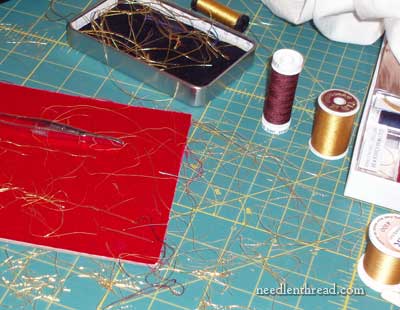
May 14, 2012
It was last June when I sketched up the original design that would become the Medallion Project. Just short of a year ago! And approximately 450 hours of stitching later – most of which was done between the January and now – it is Finally Finished!
Didn’t you hear all that joyous shouting Saturday around 2:00 pm? That was me. I let out a regular hoop-dee-doo.
This finished medallion will be appliquéd to the back of a chasuble, but that won’t happen until the end of this week. Between now and then, there’s one more step to prepare the medallion for the appliqué process, and I’ll show that to you once I’ve done it. Today, I’ll share with you the final steps in the embroidery.

May 12, 2012
On the website for the Dorotheum auction house, there’s a gorgeous portrait of a lady (identified as possibly Anne of Denmark, who was the wife of James I), in a gorgeous 17th century embroidered jacket.
